Search Results
Fine Jewelry University Articles matching: “crystal”
Showing only FJU Article results. Click here to show all results.
Fine Jewelry University (Show All FJU Articles)
-
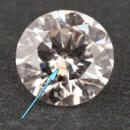
What Are Lab Grown Diamonds?
… the gemological world, synthetic is a highly technical term. When speaking technically, synthetic gems are man-made crystals with the same crystal structure and chemical composition as the specific gem that is being created. Therefore, a “…, it helps to understand a little bit about how lab grown diamonds are made. There are two techniques to grow single crystal diamonds. The first and oldest is the High Pressure High Temperature (HPHT) technique. This process starts with a …
-
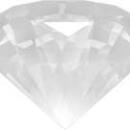
Fake Diamonds: The Great Diamond Attack
…. Synthetic is one of those words. Synthetic, in the gem world, means made of the same chemicals (elements) and crystal design as nature but is man made. So, a synthetic diamond is the same chemistry (carbon element) and crystal structure (… and have for many years now. Most are used in the manufacturing of tools like diamond tip drills. Synthetic diamond crystal big and pretty enough for jewelry has been made since the 1950’s. But, it just costs too much to justify using them…
-
Synthetic Gems: The Whole Story
… trained and equipped gemologist to detect. But if you had gem material that is the same chemically, optically and crystal structure as a natural gem, it would be very hard to tell them apart. In gemology we call this a synthetic gem. … bad, fakes, or the curse of a modern society. So a man made synthetic ruby has the same exact chemical formula and crystal structure and optical characteristics as a natural ruby. How can a person tell them apart? I will tell you it is very…
-
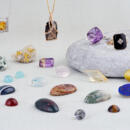
Gem in the Spotlight: Quartz
… with surprising variety. The most important reason for this variety is that quartz comes in 3 main forms: macrocrystalline, microcrystalline and cryptocrystalline. Within each of these broad categories, the different colors of the gemstone … gems. Quartz seems to have more than its fair share of misnomers. One famous one is “Alaska Diamond” for rock crystal alongside “Herkimer Diamonds” (see below). In recent times, the term “Green Amethyst,” which was commonly used for …
-
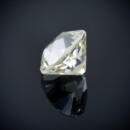
The History of Diamond Cuts
… shape. So, the Romans wore uncut diamonds. One of diamond’s remarkable attributes is that the natural diamond crystal is beautiful without any human modification. Diamonds normally form in the octahedral shape which looks like two pyramids … center facet of a diamond. The creative name for this shape is the Table Cut. By adding more facets to the diamond crystal the single cut diamond was born. The Single Cut diamond is one of the earliest and most basic of cuts. It has an …
-
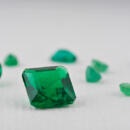
Gem in the Spotlight: Emerald
… their rich green color. The intensity of an emerald’s hue depends on the presence of chromium and vanadium in the crystal structure. Emerald’s Mohs hardness rating is 7.5-8 making it softer than sapphire and harder than amethyst and other …garden) because they look like moss or a garden inside of the stone. These inclusions are tiny fissures, bubbles, or crystals that are visible to the naked eye. These inclusions are not necessarily considered flaws but rather add character …
-

How Are Lab Grown Diamonds Made?
… with some reported successes, but none could ever be scientifically verified. The quest continued. Diamonds are a crystalline form of carbon, and so making artificial carbon crystal was the problem of lab grown diamonds. For decades, … diamonds in the lab like they grew in nature. High Pressure High Temperature Diamonds How does nature form diamond crystals? Nature does it very deep underground. Diamond growing naturally takes place about 100 miles below the earth’s …
-
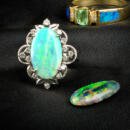
Gem in the Spotlight: Opal
… a piece of onyx and a clear piece of laboratory grown quartz (the same material that is commonly used for watch crystals). This helps show off the opal’s beauty while keeping it safe and strong. Doublets and triplets are much less expensive…, rich body color enhances the brilliance of the opalescent play of colors creating a mesmerizing visual display. Crystal Opal : Renowned for its transparency and the multilayered symphony of colors it exhibits, crystal opal is a rare and …
-
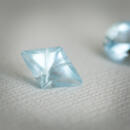
Gem in the Spotlight: Aquamarine
… ordered from Garrard in 1957. The Gemology of Aquamarine Like emerald, aquamarine is a member of the beryl family (along with morganite, heliodor, and others). Unlike emerald, it is frequently free of flaws and often occurs in large crystals. Aquamarine’s main pigment comes from iron. The color spectrum of aquamarine varies from very pale blue to a deep blue, the finest specimens being the deepest in color. Most aquamarine stones have a subtle green component, and in some…